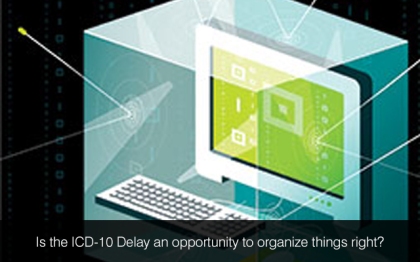A in a report released last year, it was mentioned that the clinical data analytics industry is going to get red hot. Because of the change in the direction of new payment models along with large extent of clinical data stored in electronic health records, progressively healthcare groups looking to analytics options for population health management. Chilmark Research carried out the clinical analytics industry report, explains a comparatively unformed, then again it’s a strong industry for the clinical analytics solutions, driven mainly by big challenge of population health management. Healthcare groups now are accepting variety of solutions to deal with their analytics requirements which includes combining claims with clinical data. As providers more and more aim to lower the threat of the patient populations, this claims-based legacy is going to be both, the start point and a diversion from evaluating even richer clinical data out of clinically-housed sources.
 Cora Sharma, lead analyst of the Chilmark reported during a news release, it is impossible along the fact that clinical data analytics can play an important role in promoting PHM efforts. High-touch care management processes in the past will not be enough because the size of the issue is quite big, resources not enough as well as patients also are many. Although, along with the exception of payers, the healthcare industry in general, is delayed on analytics game. Medical centers and health systems can benefit more through the information as long as they progress in knowing the analytic developments, instead of only looking at the straight facts, stated by George Zachariah, a consultant in the Dynamics Research Corporation in Andover, Massachusetts. He further mentioned 5 best steps which hospital systems could best use health analytics to be able to receive the most from the information. Use analytics that can help reduce administrative costs, use analytics for the clinical decision support, use it to reduce fraud and abuse, use it for the best care coordination and use analytics for the enhanced patient wellness.
Cora Sharma, lead analyst of the Chilmark reported during a news release, it is impossible along the fact that clinical data analytics can play an important role in promoting PHM efforts. High-touch care management processes in the past will not be enough because the size of the issue is quite big, resources not enough as well as patients also are many. Although, along with the exception of payers, the healthcare industry in general, is delayed on analytics game. Medical centers and health systems can benefit more through the information as long as they progress in knowing the analytic developments, instead of only looking at the straight facts, stated by George Zachariah, a consultant in the Dynamics Research Corporation in Andover, Massachusetts. He further mentioned 5 best steps which hospital systems could best use health analytics to be able to receive the most from the information. Use analytics that can help reduce administrative costs, use analytics for the clinical decision support, use it to reduce fraud and abuse, use it for the best care coordination and use analytics for the enhanced patient wellness.
Almost 50% of healthcare organizations addressing a new research state they’re experiencing a positive revenue in data analytics and reporting technology. The survey, by TCS Healthcare Technologies along with the Case Management Society of America and also the American Board of Quality Assurance and Utilization Review Physicians, discovered the situation improving rapidly from similar measures taken back in 2008 and 2010. 56% stated positive ROI, compared to 14% which reported a negative return, as per an announcement. 30% of respondents reported stratifying healthcare information to promote population-based screening, and to recognize candidates for the case management. On the other hand, only 25% reported working with predictive modeling applications, whereas 35% reported doing it 2 years before. Excel (39%), Crystal Reports (20%) and Access (17%) continue to be the best used applications.
Users reported the significance of dashboard and visualization abilities, naming among their main concerns the capability to manipulate reports and data provided and also to see developments for individual patients and also for major sets of data. Applications for population health management which incorporate claims and clinical data are solution to the success of responsible care organizations, an IDC Health Insights report discovered recently, stating lots of organizations have discovered that depending on EHR information only is not sufficient. Although tools which help organizations with case management were recognized with their capability to enhance care, as New Jersey-based primary-care practice Vanguard Medical Group experienced, it isn’t about the technology. A Kaiser Permanente study found readmission-prediction software was not precise enough for it to switch manual summary of cases. Medical software development teams can help you build projects within allocated budgets and time schedules.
We Develop electronic medical records. If you would like to hire healthcare software developers from us, we would be glad to assist you at Mindfire Solutions.








